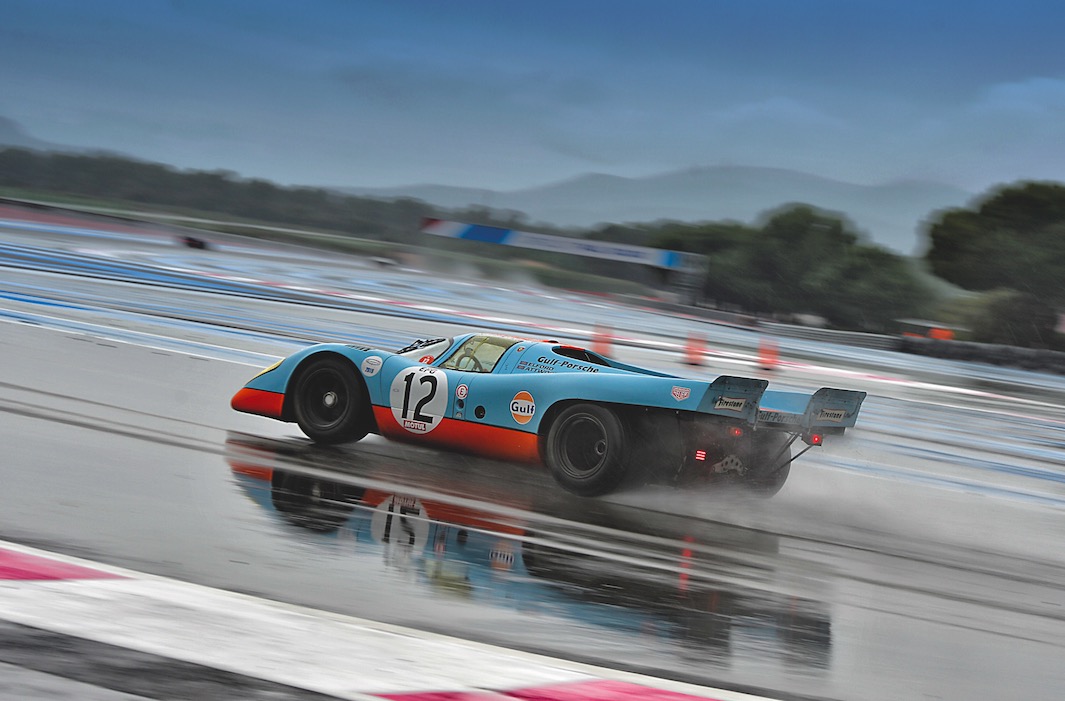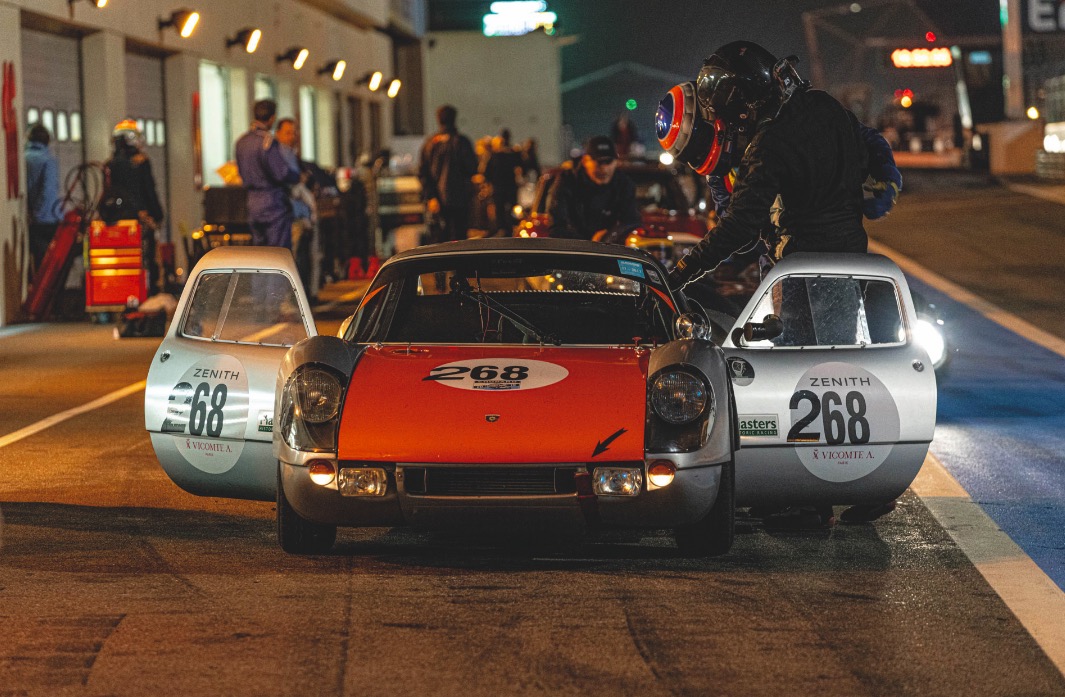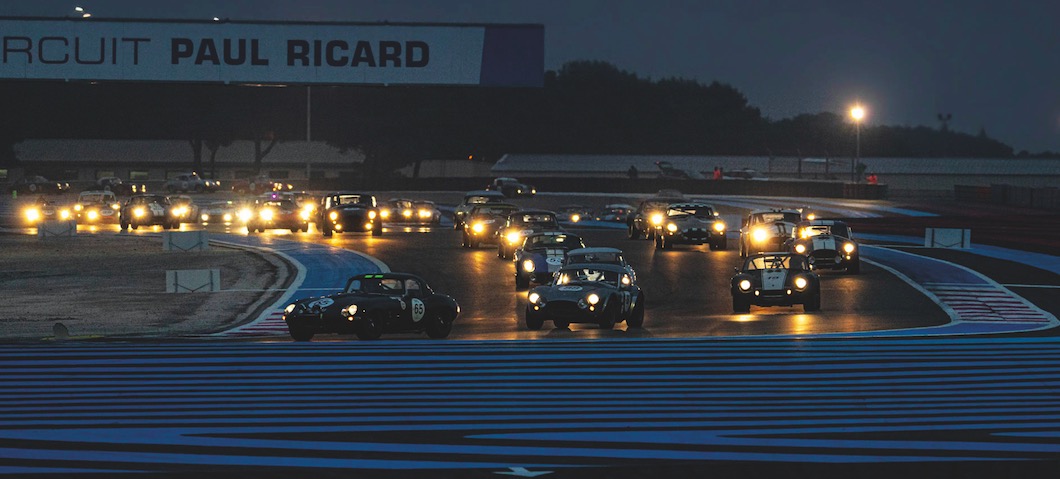Dix Mille Tours Circuit Paul Ricard
HOME » Magazine » December 2019 » Features and Reports » Dix Mille Tours Circuit Paul Ricard
Marco Zanello Reports
Not everyone remembers it, but it is at the Paul Ricard Circuit that several years ago the format that the French organiser has so successfully brought to the some of the world’s most important circuits was first tested. This year was the 10th running of the Dix Mille Tours event. That the event was successful can be taken for granted. In fact it was a record year in terms of numbers of entries.

Didier Denat was an early retirement from the 90-minute 2L Cup race. Photos Courtesy Peter Auto
But I’d like to discuss what had not convinced me at Monza: the Endurance Racing Legends, which in their racing format fail to excite. There is too much disparity in performance between the cars, as well as amongst the drivers, and frankly it would be better to leave it as a demonstration session, perhaps rewarding the drivers that achieve the best times, calculated with a handicap.
In Group C, besides the stars of the category, of note was the Olmas GTL 2000 of Xavier Micheron, a collector particularly interested in sports cars not from the front page. The prototype designed by Gianni Lo Bartolo is characterised by a monocoque made of carbon fibre and driven by a Cosworth DFV prepared by Virgilio Conrero. In 1988 it was entered in three World Endurance Championship races, including the 24 hours of Le Mans, but power problems and the electrical system soon marked its destiny, confining it to only sporadic participation in Italian hillclimb events.

Claudio Rodedero in his Porsche 917
In the races, there was a debacle for the favoured combo of Gerard Lopez/Éric Hélary in the beautiful Jaguar XJR14, always largely in the lead but forced to retire from both races. This left a victory apiece to Ivan Vercoutere/Ralf Kelleners and Michel Lecourt/Raymond Narac, both in Porsche 962Cs. It i was, in fact, Eric Maris in the Peugeot 905 EV1B who first passed the chequered flag, but the WEC driver was handed a two-minute penalty for speeding in the pit lane.
The 2-Litre Cup race for Porches was definitely less brilliant than usual. Led initially by William Paul teamed with Rory Butcher, poleman Mark Sumpter passed into the lead to take victory in a somewhat processional race. Sumpter had enough points in hand to take the 2019 Championship whatever happened, but the race for second saw Andrew Smith/Oliver Bryant and Harvey Stanley/Richard Cook on equal points going into the race. The former’s second place finish ahead of Stanley and Cook sealed their second place in the championship and, under the Peter Auto system of ‘Elite’ and ‘Gentlemen’ drivers, they took the Gentlemen Championship.

Peter Muelder and Christian Traber came third in the Greatest’s Trophy race in a Bizzarinni 5300 GT
The Greatest’s Trophy is perhaps the category that most closely reflects the grids of the ‘60s, and is certainly the most valuable, both in monetary terms, with cars such as the Ferrari 250 GTO, and also in purely historical value, such as Albert Streminski’s Tojeiro Climax 1100. While in race 1 Lukas and Martin Halusa crushed the opposition at the wheel of a Lightweight Jaguar E-type to the point of winning the 35-minute race by nearly a full minute ahead of Carlos Monteverde’s similar car, co-driven by Gary Pearson. In race 2 the latter pair were the ones to impose themselves after a good challenge from the Bizzarrini 5300 GT Jean Clement until it retired.
Thanks to the difficult weather conditions, the most interesting race of the weekend came from the Heritage Touring Cup, the category that, it must be said, has the least number of original cars on the grid. After a brilliant race start, Steve Dance, driving his Ford Capri 3100 RS, was able to stretch out a gap in the first laps with apparent ease. But as the one-hour race progressed, his pursuers managed to reel him in and overtake him, relegating him to an honourable, but disappointing, fourth place. The win, under increasingly insistent rain, went to Swiss driver Michael Erlich in his BMW 3.0 CSL, his fourth outright win of the season.

Michiel Van Duijvendick and Pascal Pandelaar
The Classic Endurance Racing grids are always interesting and offer perhaps the most competitive fields in the Peter Auto-organised events. There is no lack of novelty among the members, sometimes absolute, sometimes relative. It was the case of the former Porsche 917 Woolfe, recently recreated by the Kauhsen team, already seen on several occasions on the track in recent years, but presented at le Castellet in the hands of David Hart and Nicky Pastorelli, in the colours with which it took part at Spa. In the race the car was immediately forced to retire due to an exhaust problem, while Daniel Gibson’s superior pace in his Lola T70 MkIII B meant he could lead from the early stages to take a comfortable victory over the similar cars of Eric Mestdagh and Roald Goethe/Stuart Hall, the latter pair not present on the podium due to a post-race penalty.
In the CER 2 race, run in better conditions and indeed, started under some timid rays of sun, the focus was on the exciting duel that saw the two TOJ SCs of Yves Scemama (304), and Maxime Martin, with the 303, who finished the one-hour race in that order with a second separating them. Goethe and Hall, driving a Mirage GR7 made it to the podium this time.
Sixties’ Endurance
Amongst the most interesting races of the weekend was the Sixties’ Endurance, both for the high level of competition, and because it was run completely at night. Adverse weather conditions forced the organisers to postpone the race start to 6.45pm, when darkness had already fallen on the Var circuit. And for a long time the night seemed to want to promote a new winner for a category in which the Cobras habitually monopolise the podium. Instead, the Jaguar E-type of William Paul and Rory Butcher led the 80 plus car field from the beginning, until they retired with just thirty minutes left to run of the two-hour race. This left James Cottingham/Harvey Stanley, who had started from the front row, a free run to lead four more Cobras to the chequer, with the first E-type, driven by Maxime Guenat and Guillaume Mahé in sixth place. It should be noted that at the end of the qualifying session, the first three crews were timed within 55 hundredths of a second, perhaps a record for a historic GT race. Gabriel Balthazard and Didier Maris took the prestigious Index of Performance in their Porsche 356 Pre-A, followed in the rankings by Sandy Watson and Andrew Kirkaldy in Sandy’s Lotus XI and the similar car of Guy Peeters/Frederic Debraey.

The Sixties’ Endurance race was started in the dark
For a full report see our December 2019 issue
These stories are all from the pages of Historic Motor Racing News. Some have been abbreviated for this web site. If you'd like to receive the full version, please visit our subscription page where you will find postal subscriptions available. A full subscription also entitles you to access the current issue online (available soon), so you can take it with you and read it anywhere, and we are working on providing full access to our archives of back issues exclusively for our subscribers.